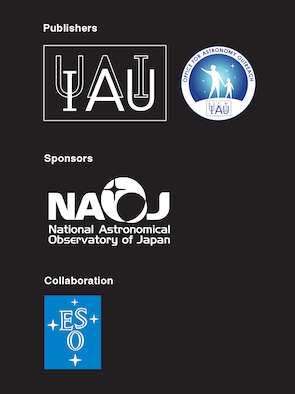Frequently Asked Questions
1. Is this the only journal of its kind? If not, what others are there?
2. How is the journal being paid for?
3. What kind of people do you anticipate reading and submitting to the journal?
4. Why is communicating astronomy to the public important?

1. Is this the only journal of its kind? If not, what others are there?
There are many thousands of journals and magazines on the topic of science or astronomy outreach and communication, but in some ways, this initiative is special. Two science communication journals in particular – Public Understanding of Science (Sage) and Science Communication (Sage) – have a broader scope, as they cover all of science communication. However, these and many other similar journals focus almost entirely on theoretical issues and publish primarily research articles. We encourage other types of articles, like hands-on or practical articles, and welcome announcements, reviews, and best practices, alongside research. For astronomy educators, there is an excellent online journal called the Astronomy Education Journal (AEJ; Urban & Bretones, 2021). CAPjournal and AEJ are complementary, and together they provide important resources for the astronomy educational and public outreach communities.
References:
Eriksson, U., & Bretones, P.S. (2021). Welcome to AEJ. Astronomy Education Journal, 1(1), 2-3. https://doi.org/10.32374/AEJ.2021.1.1.001
2. How is the Journal funded?
Currently, the CAPjournal is run by the IAU Office for Astronomy Outreach. This includes managing the editorial work, marketing, distribution, design/prepress, and so on. CAPjournal is a collaboration with the European Southern Observatory (ESO), which provides support through website maintenance and digital publication. The peer-reviewers and Editorial Board members are volunteers, and our print costs are supported by the IAU and the National Astronomical Observatory of Japan (NAOJ).
3. What kind of people do you anticipate reading and submitting to the Journal?
The target group of the CAPjournal consists of all types of astronomy communicators – including Public Information Officers, planetarium or science centre staff, public outreach professionals, amateur astronomers, and communicating scientists. We hope that most readers will consider contributing to the journal by taking the effort to document their experiences – good or bad – in communicating astronomy with the public. Note, however, that CAPjournal does not cover basic science; submitted articles that pertain to the study of astrophysics or any other science will not be accepted.
4. Why is communicating astronomy to the public important?
Astronomy has a special place (e.g., Madsen & West, 2003) in science communication. Astronomy touches the largest philosophical questions known to humankind: Where do we come from? How did life arise? Is there life elsewhere in the Universe? In this way, astronomy has the unique ability to draw people in to learn, ask questions, discover, and critically think about the world around them. Further, there are many Indigenous (e.g., Australian Indigenous Astronomy, 2022; Lee, 2022), cultural (e.g., Holbrook et al., 2008), and religious (e.g., King, 2015) ties to astronomy (far more than those referenced here), bridging the subject with topics more personal than science. The public communication of astronomy provides an important link between the scientific astronomical community and society, lending visibility to and supporting both formal and informal science education. It also serves as a conduit for equitable, diverse, and inclusive learning environments (e.g., IAU EC WG Astronomy for Equity and Inclusion, 2022), paving the way for inclusive science communication efforts.
References:
Australian Indigenous Astronomy. (2022). Aboriginal and Torres Strait Islander Astronomy. Retrieved from
http://www.aboriginalastronomy.com.au/
Holbrook, J.C., Urama, J.O, & Medupe, R.T. (Eds.) (2008). African cultural astronomy: Current archaeoastronomy and ethnoastronomy research in Africa. Springer.
IAU EC WG Astronomy for Equity and Inclusion. (2022). Mission.
https://iau-oao.nao.ac.jp/iau-inclusion/home/
King, D.A. (2015). Astronomy in the Service of Islam. In C. Ruggles (Ed.), Handbook of Archaeoastronomy and Ethnoastronomy (pp. 181-196). Springer.
https://doi.org/10.1007/978-1-4614-6141-8_13
Lee, A. (2022). Native Skywatchers Resources. Native Skywatchers.
https://www.nativeskywatchers.com/resources.html
Madsen, C., & West, R.M. (2003). Public Communication of Astronomy. In A. Heck & C. Madsen (Eds.), Astronomy Communication, (Vol. 290, pp. 3-18). Springer.
https://doi.org/1007/978-94-017-0801-2_1
|

